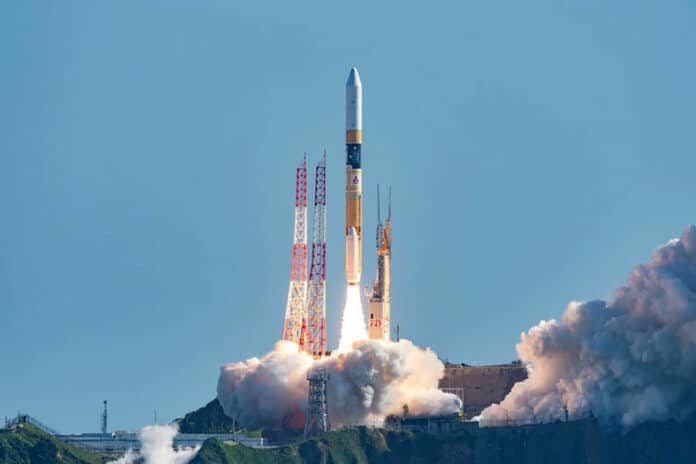The Japanese Aerospace Exploration Agency (JAXA) has successfully launched its two ambitious missions into space today – a powerful X-ray space telescope and a pioneering lunar lander.
A Mitsubishi Heavy Industries H-IIA rocket carrying the X-ray Imaging and Spectroscopy Mission (XRISM) and the Smart Lander for Investigating Moon (SLIM) lifted off from Tanegashima Space Center at 8:42 am on September 7, 2023 (Japan Standard Time, JST). The launch has been delayed multiple times due to unfavorable weather.
After lifting off, the H-IIA rocket flew as planned, and it was confirmed that XRISM was successfully separated from the launch vehicle at about 14 minutes and 9 seconds after launch. And at about 47 minutes and 33 seconds after launch, SLIM was separated at an orbital altitude of 340 miles (550 km) inclined 31 degrees to the equator.
If successful, the SLIM moon lander will attempt to pull off Japan’s first-ever soft lunar landing early next year. This will make Japan the world’s fifth country to successfully land on the Moon after the United States, the Soviet Union, China, and India. The launch comes two weeks after India became the fourth nation to successfully land a spacecraft on the Moon with its Chandrayaan-3 mission to the rugged, unexplored Moon’s south pole.
Dubbed the “moon sniper,” SLIM is a small-scale exploration lander “designed for pinpoint landings on the Moon’s surface, reduction in the size and weight of equipment used in Moon landings, and investigation into the Moon’s origins.” Additionally, SLIM will test technology fundamental to exploration in low-gravity environments.
The small lunar lander measures just 7.9 feet (2.4 meters) long, 5.6 feet (1.7 m) wide, 8.8 feet (2.7 m) high, and has a mass of 200 kg (dry) and 700 kg with propellants. The probe aims to soft-land within 330 feet (100 meters) of its target site on the lunar surface. It is equipped with a laser range finder, landing radar, and a navigation camera for vision-based navigation to help measure and correct its position while landing on the Moon.
As a suitable location for spectroscopic camera observations and for demonstrating landing technologies, JAXA has selected a site neighboring the SHIOLI crater near the “Sea of Nectar” as the landing target site.
SLIM will rely on its own propulsion system to make trajectory adjustments towards the Moon. This is why it adopts a trajectory design that minimizes the consumption of propellant. However, this approach means that it will take several months for SLIM to reach the Moon.
The SLIM lander aims to achieve a small-scale, lightweight probe system and pinpoint landing technology, in addition to contributing to future lunar probes.
On the other hand, the X-ray Imaging and Spectroscopy Mission (XRISM) is a joint project of JAXA, NASA, and the European Space Agency (ESA). As the name suggests, the XRISM X-ray space telescope will perform high-resolution X-ray spectroscopic observations of the hot gas plasma wind that blows through the galaxies in the universe. These observations will enable us to determine flows of mass and energy, revealing the composition and evolution of celestial objects.
It’s hoped that XRISM will close this gap caused by the unexpected destruction of the Hitomi mission in 2016 due to a software error until the launch of the ATHENA mission in 2035.
